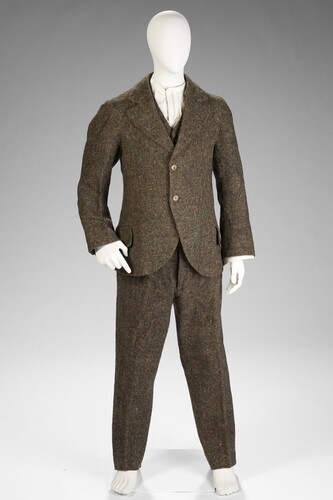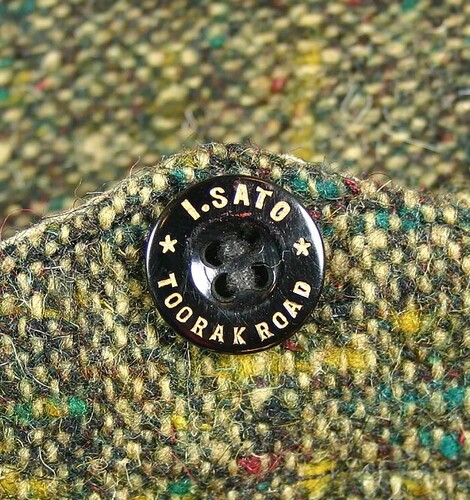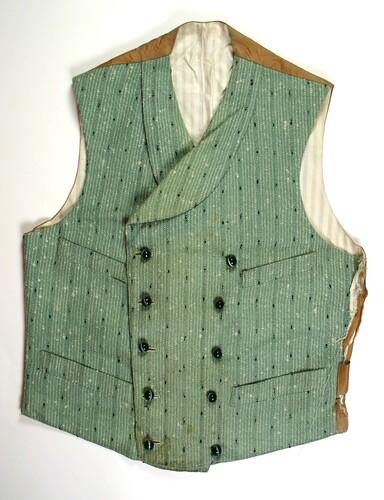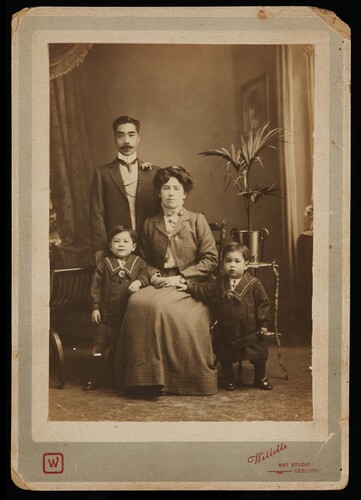In June 2023, I gave an interview about the Australian history of the three-piece suit on Radio National’s LifeMatters program.
The interview was sparked by a journal article that Lorinda Cramer and I published last year on the significance of suits for masculine belonging and social acceptability in early twentieth-century Australia.

The article explored a number of bespoke suits worn by the Japanese-Australian laundryman, Setsutaro Hasegawa (initially based in Melbourne before moving to Ballarat and then Geelong) across the early decades of the 1900s.
Hasegawa commissioned a number of suits and harmonious separates from a tailor in the first decade of the twentieth century. Since they were custom-made from quality fabrics such as the wool tweed seen below – its brown yarn incorporating subtle hints of yellow, red and blue – these garments would have been difficult for him to afford.

Though he had been a school teacher in Japan, Hasegawa had worked as a domestic servant for a Melbourne family after migrating in 1897. He had stuck with this poorly-paid job until he venturing out with his own laundry business in Melbourne’s bustling Toorak Road in the early 1900s.
While custom-made suits would likely otherwise been out of his reach financially, Hasegawa’s were made for him by the tailor Ichizo Sato, another Japanese-Melburnian based in Toorak Road. It is possible that Hasegawa offered services in kind to Sato in exchange for items such as his tweed suit and this beautiful double-breasted shawl-collared waistcoat of pale forest-green wool:


Hasegawa kept all of the garments that Sato made for him in impeccable order over the decades until his death in 1952. He left them to a favoured daughter-in-law who later passed them on to his great-grandson, Andrew Hasegawa.
When Lorinda and I encountered Hasegawa’s treasured garments in a MuseumsVictoria storeroom, we saw them as an example of how significant suits became to men from across classes and ethnicities in early twentieth-century Australia.
The three-piece suit came to act as a passport to masculine dignity, commercial participation and social acceptance in Australia at this time.
This was just one of the many reasons that First Nations men were so marginalised: a decent three-piece suit was beyond the reach of the majority of Aboriginal and Torres Strait Islander men, yet was necessary for anyone wanting to be considered deserving of basic social regard.
A related point may be made of other non-white men such as Hasegawa. An Asian man running a small business during the White Australia era had extra reason to want to wear a quietly stylish version of a three-piece suit. To dress in this way was to bid to be respected and accepted in a “white man’s country” – and to reflect on this now is to gain a new angle on the social significance of the suit in Australia and other Global Northern societies in the day.
Reference
Melissa Bellanta and Lorinda Cramer, “The Comfort of Things in White Australia: Male Immigrants, Race and the Three-Piece Suit, c.1901-39.” Australian Historical Studies 54, no. 3 (2023): 483–510.
See Andrew Hasegawa’s profile and tribute to his great-grandfather Setsutaro on the Discover Nikkei: Japanse Migrants and Their Descendants blog.
